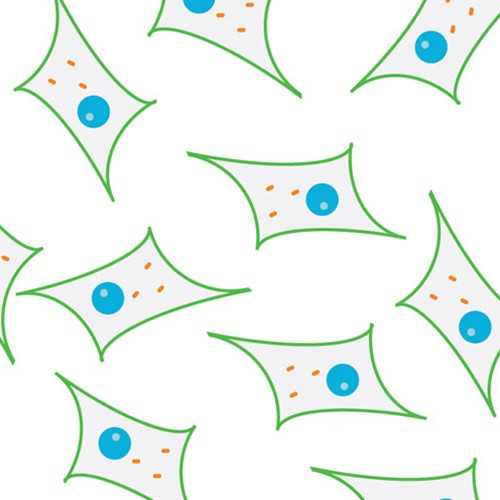C57BL/6J Macrophage Cell Line
A mouse macrophage cell line derived from C57 BL/6J bone marrow after immortalization with a retrovirus (J2) containing the myc and v-raf oncogenes.
C57BL/6J is the most widely used inbred strain labortory mice. Scientists use as a general purpose strain and background strain for the generation of congenics carrying both spontaneous and induced mutations. Although this strain is refractory to many tumors, it is a permissive background for maximal expression of most mutations.
From the laboratory of Howard A. Young, PhD, National Cancer Institute/NIH.
A mouse macrophage cell line derived from C57 BL/6J bone marrow after immortalization with a retrovirus (J2) containing the myc and v-raf oncogenes.
C57BL/6J is the most widely used inbred strain labortory mice. Scientists use as a general purpose strain and background strain for the generation of congenics carrying both spontaneous and induced mutations. Although this strain is refractory to many tumors, it is a permissive background for maximal expression of most mutations.
From the laboratory of Howard A. Young, PhD, National Cancer Institute/NIH.
This product is for sale to Nonprofit customers only. For profit customers, please Contact Us for more information.
| Product Type: | Cell Line |
| Name: | C57BL/6J |
| Cell Type: | Macrophage |
| Morphology: | Adherent |
| Organism: | Mouse |
| Source: | Bone Marrow |
| Biosafety Level: | BSL2 |
| Growth Conditions: | DMEM + 10% FBS + Glutamine |
| Cryopreservation: | 90% FBS + 10% DMSO |
| Storage: | Liquid Nitrogen |
| Shipped: | Dry Ice |
- Blasi E, Radzioch D, Merletti L, Varesio L. Generation of macrophage cell line from fresh bone marrow cells with a myc/raf recombinant retrovirus. Cancer Biochem Biophys. 1989;10(4):303-317.
- Blasi E, Mathieson BJ, Varesio L, Cleveland JL, Borchert PA, Rapp UR. Selective immortalization of murine macrophages from fresh bone marrow by a raf/myc recombinant murine retrovirus. Nature. 1985;318(6047):667-670.
- Xiao C, Wang RH, Lahusen TJ, et al. Progression of chronic liver inflammation and fibrosis driven by activation of c-JUN signaling in Sirt6 mutant mice. J Biol Chem. 2012;287(50):41903-41913.
If you publish research with this product, please let us know so we can cite your paper.


